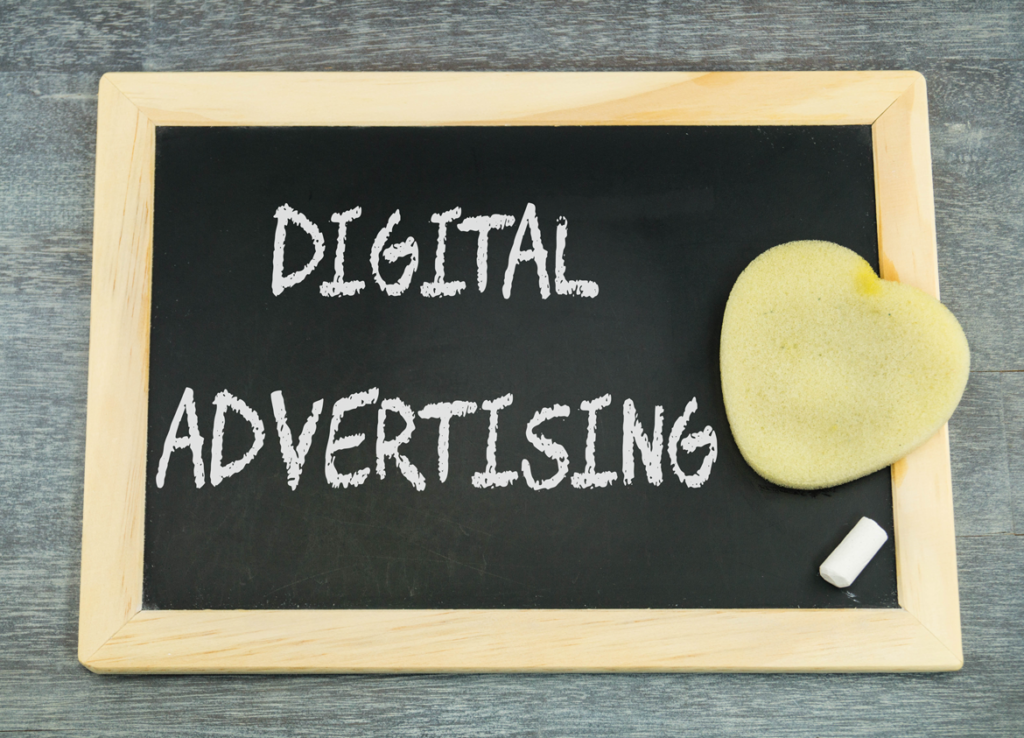 Membership TodaySign Up Now
Membership TodaySign Up NowDigital Advertising Quick Reference Glossary
The digital world is ever-changing and the terminology can be confusing. Below is our Advertising Terms Glossary for the most common digital marketing terms that each marketer should know to remain ahead of the curve.
Our resources for compiling this glossary came from our own experience running YouTube ads, as well as the following resources:
- The Best Guide to Advertising Terms from DesignInc.
- 64 Digital Marketing Terms Every Marketer Should Know from Act On
Digital Advertising Terms Glossary
A
A/B Testing – a process used to compare different versions of digital ads or web pages to see which one works better. A standard A / B ad check involves simultaneously running the two advertisements and testing which version gets better engagement from viewers. From there, advertisers can adjust their campaigns and run the more successful ad or make improvements to the other ad.
Account-based Advertising – is the practice of advertising only to specific accounts. Advertisers will target only certain accounts at a certain company. For example, a brand could choose to only target a Senior Product Manager at one specific company.
Ad Audience – The cumulative number of people who have or may have been exposed to ads over a given period of time.
Ad Banner – The most frequent form of digital advertising. Such ad units are shown on a web page or application, and may include static graphics, videos and/or interactive rich media.
Ad Click – An action taken anytime a person engages with an ad, either by clicking on it with their mouse or by pressing enter on their keyboard.
Ad Click Rate – It is the percentage of clicks vs. impressions on the ad on a particular website. Often referred to as “yield.”
Ad Exchange – A technology-facilitated platform that enables Web publishers and marketers to buy and sell ads in real-time auctions. Content exchanges are a deviation from the conventional system of purchasing ad space, where marketers and publishers will enter into pricing agreements to show advertisements on a single website. For an ad swap, an auction is held in real-time, offering instant ad room trading that is open on the Internet.
Ad Impressions – The number of times the ad was delivered, regardless of whether the customer personally noticed or communicated with the ad in some way.
Ad Inventory – Website developers deliver advertisements to users as they visit the website. The number of possible advertisements that can be served is known to be their ad inventory. For example, if a website receives 10,000 visits to their web page in any given week and has space for two ad displays on their homepage, then their total ad inventory is 20,000 impressions per week.
Ad Network – A seller that links advertisers to publishers. Ad networks serve as a common point of communication for publishers and marketers, helping to manage supply and demand.
Ad Sequencing – A video ad sequence is made up of a series of video ads that you’d like to show to a person. Each sequence campaign is made up of a series of “steps.” Within each step of a sequence is an ad group and a video ad.
Ad Serving – Transmission of an ad from a web server to an end-user computer where the advertisements are displayed on a website or an application.
Ad Targeting – Providing advertisements to a pre-selected market based on different factors, such as location, gender, psychography, online browsing habits, and previous transactions.
Ad Unit – The scale and shape specification for an ad. The Interactive Advertising Bureau, a trade group supporting digital advertising policies best practices, has a range of scale criteria.
AdWords – This is a system offered by Google to businesses wanting to show advertisements on Google and its advertisement network. The AdWords system enables companies to set the advertisement budget and pay only when users click on the advertisements. The ad company relies primarily on keywords.
Affiliate Marketing – Publishers of websites that attract visitors and marketers tend to sell their goods to people who use these websites. Affiliate promotion is a relationship between the publisher and the advertiser where the publisher is paid for every click delivered and/or any transaction made of the advertiser’s product or service.
Analytics – Relevant data and information on the users of the website and how they engage with the website. Analytics can be used to figure out how many users are visiting the website, how much time they spend on the website, and what different acts they do on the website. This knowledge is then used to reach consumers, identify customer behavior, improve user experience and automate promotional strategies.
Attribution – The purpose of the attribution is to determine which contact, of the many possibilities, is most (or partially) responsible for the transfer, so that the ROI can be measured. First touch, last touch and multi-touch are typical assignment types. For example, a transaction might begin with an ad, proceed to an email campaign, and finish with a phone call from a salesperson. For the first-touch contract, the ad will get the full credit for the deal. For the last touch, the phone call gets all the glory. In a multi-touch, an ad, an email, and a phone call each gains partial credit.
Average Persons – It is the number of individuals who will be drawn to every position on average. Average Populations are determined by multiplying Population by Ranking and then dividing by 100.

B
Banner advert – This is a type of online advertising that includes embedding an advertisement in a web page.
Brand Awareness – The degree or level at which a prospective customer may remember and recognise a certain product or service. Increased brand recognition is one of the two normal main targets in a digital media strategy (the other is a conversion of some kind).
C
Call to Action (CTA) – A word that is used in an ad, or a graphic feature, such as a click, that encourages the viewer to take action. Examples include phrases like, Download Your Free eBook Now, Click Here, or Register Now.
Channel – This is a distribution method. In advertising, it is the medium used by brands to target audiences, such as direct mail or radio. Digital advertisement covers platforms such as television ads, social media advertising and in-app web advertising.
Click-through Rate (CTR) – This figure indicates how many people who are targeted by an ad end up clicking on it and is expressed as a proportion of overall views. The CTR ad is determined by calculating the number of clicks that an ad has earned by the number of times it has been delivered, and then translating it to a metric. For example, if the ad has earned 5 clicks and has been seen 1000 times, the CTR is 0.5 percent. The higher the CTR on the ad, the better it performs.
Contextual Targeting – Selecting viewers based on the content classification that is presented on a given web page. An example is targeting people who have visited websites about video games.
Conversion – Before launching an advertisement, advertisers pick a particular action or series of actions they want the viewer to take. Any time a member of the audience takes this move, it is counted as a conversion. Conversions include acts such as registering for a webinar, or purchasing a product online.
Conversion Pixel – A 1×1 photo pixel put on a web page (such as a thank-you post) that is activated if a conversion occurs. The pixel is typically translucent. The first is by calculating the number of people who have finished the transfer and dividing it by the cumulative number of experiences served. The second, more popular approach is to take the number of users who completed the conversion and split it by the total number of users who clicked on the ad.
Conversion Tracking – Tracks how many conversions have taken place in any given time frame, and evaluates which advertisements have contributed to conversions.
Cost per Acquisition (CPA) – The price of attracting a customer. Usually determined by calculating the overall amount spent on the promotional campaign and the number of consumers gained during the campaign.
Cost per Click (CPC) – How much an advertiser spends, on average, for every ad click. The CPC shall be determined by dividing the total amount spent on the campaign by the number of clicks produced.
Cost per Lead (CPL) – How much an advertiser spends, on average, for any ad click that results in a lead conversion. CPL is determined by dividing the total amount spent in the campaign by the number of leads produced.
Cost per Thousand (CPM) – A metric that shows how much it costs to deliver 1,000 ad impressions. Often used as a regular measure for the purchasing of display ads, as inventory is usually sold on a CPM basis.
Cross-Channel – This refers to technology or media that is distributed across multiple platforms and across multiple devices. That is distinct from “cross-device,” which means just a multi-device program rather than multiple device formats.
Cross-Device Targeting – This involves serving the same consumer focused ads across different platforms. Cross-device targeting permits advertisers to connect with their audiences in a linear, predictable manner, irrelevant of the device they are on.

D
Demand-Side Platform (DSP) – A program that helps marketers to compete for and buy inventory from various ad exchanges via a single app.
DOOH – This stands for ‘Digital Out-of-Home’ advertising. They are internet ads that are sold to customers while they are on the move, such as in buses, in commercial places or in waiting rooms.
DPS – Double Page Spread is the scale of the commercial in two separate pages of the paper. It is one of the most expensive advertisements because it has a significant impact.
Direct Response – A campaign or ad specifically intended to inspire people to take decisive action.
Display Advertising – A digital advertising model where visual advertisements are shown on a web page. The word started in the journal, and the ideas still apply. Display advertisements can be graphics, videos, interactive images, and they are expandable.
E
Email Advertising – This involves advertising through email with clickable banners or promotional offers with links to sales pages.
Expandable Banner – Banners that increase in size while the user hovers their mouse over them.
F
Frequency – The amount of times an ad is delivered to the same user in a given period of time. Because multiple users will also reach the Internet from the same computer, the frequency is determined based on the amount of times the ad is delivered to a single person ‘s browser.
Frequency Capping – The maximum amount that is set by the advertiser for the number of times the ad is to be transmitted to the customer within a fixed amount of time.
G
Geographic Targeting – Choosing a target for a campaign centered on zip codes, a designated marketing area (DMA), cities , states, and countries.
GRP – Stands for ‘gross rating point’ which is a measure of the scale of the promotional campaign on a given channel or timetable. GRP is determined by multiplying the number of Spots by ranking.
I
Impressions – That is the cumulative amount of exposures to the ads. Over time, one person may obtain several exposures. When one user has been subjected to the commercial five times, that will count as five impressions.
In-Stream Video Ads – Digital advertisements that are played before, during, or after a video. These are the most common types of ads on YouTube.
Interstitial Ads – Ads that exist within two separate information sites, and are delivered as a website user navigates from one page to another. The best approach in mobile marketing is to avoid using an interstitial as a pop-up that prevents initial entry.
K
Keyword – A particular word or expression used by marketers to trigger the display of their ad in the search engine results. The advertiser making personalized ads often uses keywords so that their ad can appear on sites that are retrieved with that keyword. The location of the ad inside the results of the search ads is decided by the bidding. Normally, the highest bidder on the keyword is in the top spot.
KPI – The ‘Key Performance Indicator’ is a tangible metric that shows how successfully an organization meets its market goals.
L
Landing Page – The web page that users are directed to after they have clicked on the display or paid search ad.
Lead – This is a potential future client. For digital ads, a lead is someone who has given you their contact information, either by signing up for a newsletter or filling out a form to download an eBook or other material.
Lead Magnet- A offer that a company makes in exchange for gaining access to a lead’s contact information. An example is offering a free download of a report in exchange for the lead’s e-mail address and name.
Lookalike Audience – This is an audience that is similar to another audience. Advertisers can target users who relate close to your current clients, helping to increase your retention levels. You can use Lookalike Audiences when you’re running an online website, Twitter, smartphone show, or just about every other form of digital marketing campaign.
M
Media Cost – This is the price you pay to make your commercial visible. There are several different ways to market the media including ratings, views, clicks, leads, acts, days, weeks, months, etc. Nonetheless, it actually amounts to the price you spend to present your commercial, which is the Advertising Value. The Media Price includes publicity expenses and other charges.
Media Market or Market – It identifies a group of individuals who may possibly be subject to the ads. The media industry is often represented using Designated Market Areas or DMAs (which are trademarked by Nielsen). Nonetheless, the Media Market can be any market you identify.
Message Recall – Measurement used to assess the efficacy of an ad in influencing the willingness of the audience to identify the brand or the meaning it wanted to convey.
N
Native Advertising – Any commercial advertisement that matches the format of the platform or medium that hosts it.
O
OOH – It stands for Out-Of-Home advertising, which applies to any marketing shown in public places.
Overlay Ad- Advertising that is displayed over website content, graphics, or videos and cannot be blocked.
P
Paid Search – A form of digital marketing where search engines allow advertisers to pay in order to place their ads in their search results.
Pay per Click (PPC) – Price model where marketers pay vendors or publishers based on the amount of clicks earned on their ads during the campaign.
Placement Targeting- This is the act of placing ads on specific sites or videos where the advertiser knows their audience will be watching.
Programmatic Media Buying – An automatic form of purchasing media that ensures that marketers reach the right user, at the right time, in the right place. Ads are purchased on the basis of a set of criteria pre-defined by an ad placement business. Programmatic advertising uses data to make decisions on which advertisements to purchase in real time, which increases performance and enhances the efficacy of advertisement. (See, below, Ad Exchange.)
R
Rating – It is the amount of the market that is likely to be exposed to your ads. It is measured 0-100 and is an assessment based on previous results.
Reach – The overall number of people who can see your ad or message.
Retargeting/Remarketing – This refers to serving advertisements for users who have previously viewed your website.
Rich Media – Interactive media like quizzes, games, videos and animations.
S
Sequential Messaging – Sequential messaging, otherwise known as sequential advertising or sequential retargeting, is a marketing technique which uses a sequence of ads to tell a story. These ads appear across multiple devices such as smartphones, tablets and computers to guide a target audience member through the conversion process.
Skyscraper – Used to describe the scale of a print or digital advertisement. A skyscraper is a tall, thin online billboard (often one of two sizes: 120×600 and 160×600).
Spot – It’s a single transmission of an advertisement. Usually, several spots are used in the commercial placement.
Social Advertising – Running paid ads on online social networking sites, such as Facebook, LinkedIn, Instagram, Twitter and Pinterest.
V
View Through – Designed to assess the actions of the user after the ad has been served. When the view through is set to 90 days, the behavior of the user is attributed to the ad during that span of time.
Y
Yield – It is the percentage of clicks vs. impressions on the ad on a particular website. Often referred to as “ad click rate.”
Scale your Business with YouTube Advertising
At TubeSift, we help businesses, ad agencies, and individual entrepreneurs scale their businesses with placement targeting on YouTube.
To learn more how we can help you visit TubeSift.com and check out the TubeSift blog resources we have linked below.
 Membership TodaySign Up Now
Membership TodaySign Up NowResources:
- The Best Guide to Advertising Terms from DesignInc.
- 64 Digital Marketing Terms Every Marketer Should Know from Act On
- Getting Started with YouTube Ads from the TubeSift Blog
- What is Placement Targeting on YouTube Ads? From the TubeSift Blog
- You Need High Quality Placements for YouTube Ads from the TubeSift Blog
- How to Find Monetized Placements for YouTube Ads from the TubeSift Blog




Comments are closed.